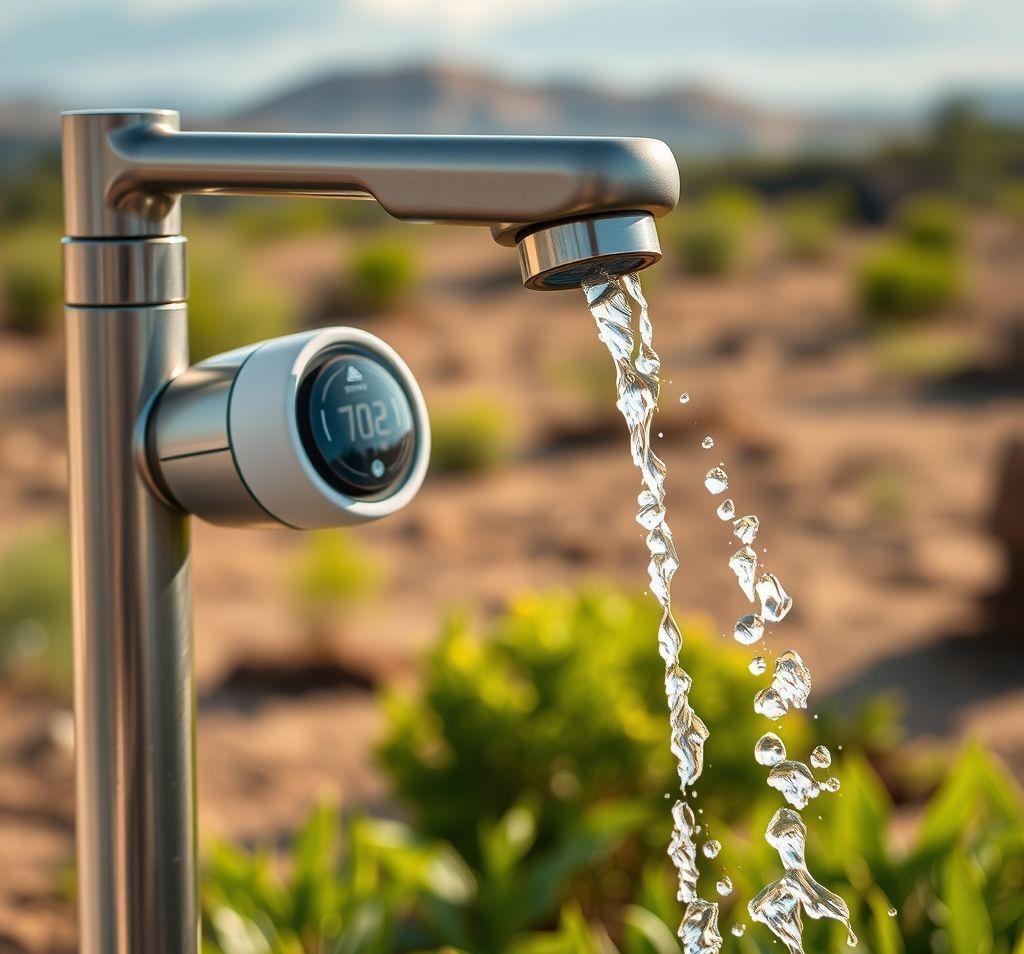As the world grapples with increasing water scarcity, innovative solutions are becoming critical for a sustainable future. This article explores how cutting-edge technologies are revolutionizing water conservation, from generating water from the air to smartening municipal water management. Discover how these advancements are paving the way for a drier planet and more resilient homes.
The Future of Water Conservation is Smart: Exploring Innovations for a Drier Planet and Resilient Homes
Atmospheric Water Generators: Pulling Water from Thin Air
Atmospheric Water Generators (AWGs) represent a groundbreaking approach to water scarcity. These devices extract moisture directly from the air, condensing it into potable water. The technology isn’t new, but recent advancements have significantly improved efficiency and affordability. AWGs work by employing cooling mechanisms to lower the air temperature to its dew point, causing water vapor to condense. The collected water then undergoes filtration and purification processes to ensure it meets drinking water standards.
Several factors influence the effectiveness of AWGs, including humidity levels, temperature, and energy consumption. Newer models are being designed with energy efficiency in mind, utilizing solar power and other renewable energy sources to minimize their environmental footprint. Furthermore, different types of AWGs cater to various needs, ranging from small, portable units suitable for individual homes to large-scale industrial systems capable of producing thousands of liters of water per day.
The potential applications of AWGs are vast. They offer a reliable water source in arid regions, disaster-stricken areas, and remote locations where traditional water infrastructure is lacking. They can also provide a sustainable alternative to bottled water, reducing plastic waste and transportation costs. However, challenges remain, including the initial investment cost and the dependence on atmospheric humidity.
Advanced Filtration: Beyond Traditional Methods
Traditional water filtration methods, while effective to a degree, often fall short in removing emerging contaminants such as microplastics, pharmaceuticals, and per- and polyfluoroalkyl substances (PFAS). Advanced filtration technologies are designed to address these limitations and provide cleaner, safer water.
Several advanced filtration methods are gaining traction:
- Reverse Osmosis (RO): RO uses pressure to force water through a semi-permeable membrane, effectively removing a wide range of contaminants, including salts, bacteria, and heavy metals.
- Activated Carbon Filtration: This method utilizes activated carbon to adsorb organic compounds, chlorine, and other impurities that affect taste and odor.
- UV Disinfection: Ultraviolet (UV) light is used to kill bacteria, viruses, and other microorganisms without the use of chemicals.
- Nanofiltration: Similar to RO, nanofiltration uses membranes with slightly larger pores, allowing it to remove specific contaminants while retaining beneficial minerals.
The integration of these advanced filtration technologies into residential and municipal water treatment systems can significantly improve water quality. Homeowners can benefit from point-of-use or point-of-entry filtration systems that provide clean drinking water and protect appliances from scale buildup. Municipalities can upgrade their water treatment plants to meet stricter regulatory standards and ensure the health of their communities.
AI-Driven Municipal Water Management: Smart Networks for Efficiency
Artificial intelligence (AI) is transforming municipal water management by optimizing resource allocation, detecting leaks, and predicting demand. AI-powered systems can analyze vast amounts of data from sensors and meters throughout the water distribution network, providing real-time insights into water flow, pressure, and quality. This data can be used to identify inefficiencies, detect leaks early, and optimize pumping schedules to reduce energy consumption.
Smart water meters, coupled with AI algorithms, can detect unusual water usage patterns that may indicate leaks in residential or commercial buildings. This allows homeowners and businesses to address leaks promptly, preventing water waste and reducing water bills. AI can also be used to predict future water demand based on weather patterns, historical data, and demographic trends, enabling water utilities to plan for future needs and avoid water shortages.
Furthermore, AI can optimize the treatment process in water treatment plants, adjusting chemical dosages and other parameters to ensure optimal water quality while minimizing chemical usage and energy consumption. The integration of AI into municipal water management systems can lead to significant cost savings, improved water quality, and a more resilient water supply.
Home Integration: Creating Smart and Sustainable Households
The future of water conservation extends beyond municipal systems and encompasses the integration of smart technologies into individual homes. Smart home devices can help homeowners monitor and manage their water usage, identify leaks, and conserve water.
Smart irrigation systems use weather data and soil moisture sensors to automatically adjust watering schedules, ensuring that plants receive the right amount of water without overwatering. Smart showerheads and faucets provide real-time feedback on water usage, encouraging users to conserve water. Leak detection sensors can be installed throughout the home to detect leaks early, preventing water damage and reducing water waste.
Integrating these smart technologies with a home automation system allows homeowners to control and monitor their water usage from a central interface. They can set water budgets, receive alerts when leaks are detected, and track their water consumption over time. By empowering homeowners with information and control, smart home technologies can play a significant role in promoting water conservation and creating more sustainable households.
In conclusion, the future of water conservation hinges on the adoption of smart technologies like atmospheric water generators, advanced filtration methods, and AI-driven water management. These innovations, coupled with home integration, offer a path towards a more water-secure future. By embracing these advancements, we can mitigate the impacts of water scarcity, build more resilient communities, and protect this vital resource for generations to come.



